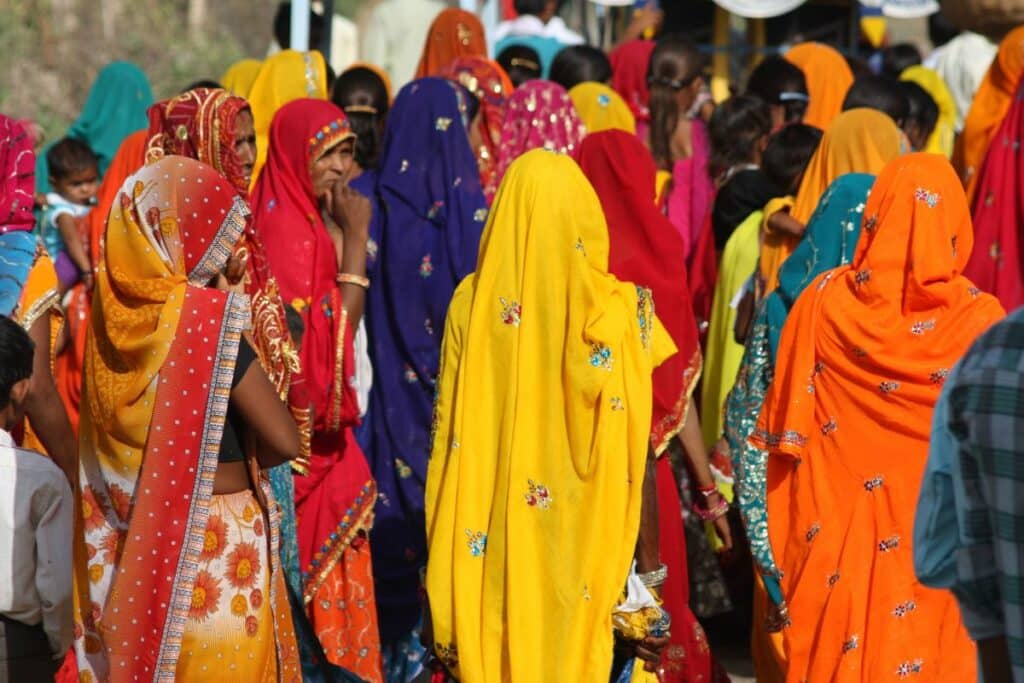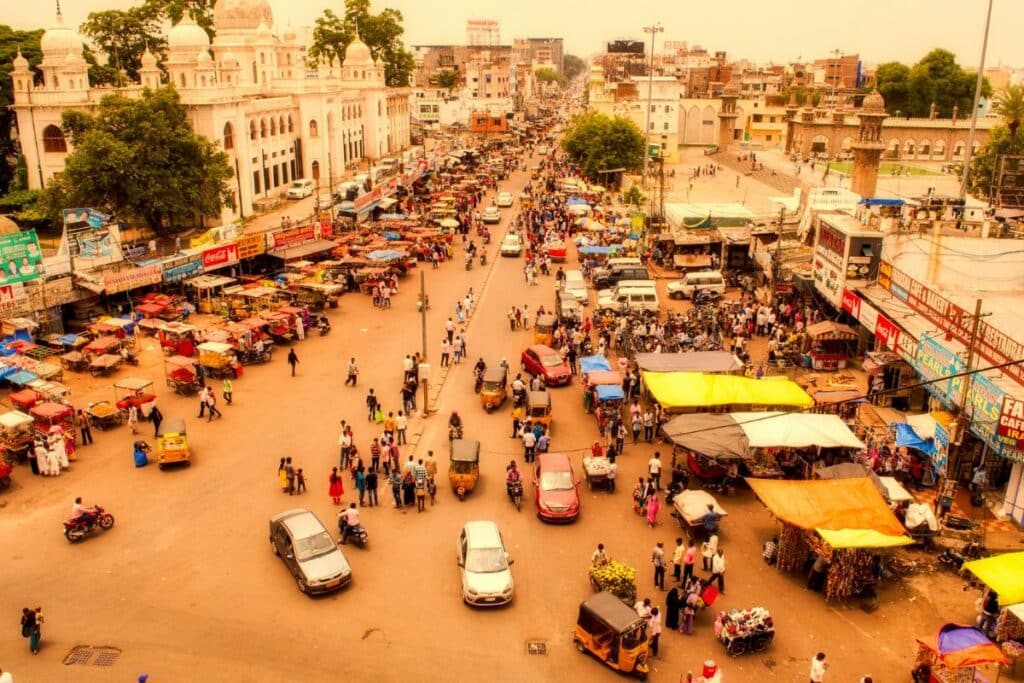Heading to India for your next adventure abroad? You will surely have an unforgettable experience in this destination that dazzles at every turn. However, take care to conduct yourself appropriately while you’re there. Here’s a guide to mastering Indian etiquette ahead of your holiday.
Do’s
Dress appropriately

It’s a good idea to dress in India in a way that respects local customs and traditions. The key to appropriate attire in this diverse country is modesty, which means minimizing the amount of exposed skin. While in larger, more cosmopolitan cities, you might find that clothing styles are more liberal, sticking to traditional or conservative choices is generally advisable, especially in smaller towns and rural areas.
Instead of reaching for the typical vacation attire like shorts and t-shirts, which might be suitable for a beach holiday but less so for traveling in India, consider opting for cool and culturally respectful attire. Long, loose-fitting clothing is ideal for dealing with the often intense heat while adhering to local norms.
This could mean wearing linen trousers paired with a long-sleeved sundress for women, while men might choose light, airy kurta shirts. Embracing local fashion by wearing traditional Indian garments such as a salwar kameez for women or a kurta for men is also a great way to show respect for the culture.
These outfits are culturally appropriate and designed to be comfortable in the hot climate, making them practical choices for travelers.
Consider temple etiquette
The best itineraries for tours to India will include at least one temple visit. These temples are not just architectural marvels but also vibrant centers of culture and spirituality, providing a rich, sensory experience that offers deep insight into the local traditions and religious practices.
Temple etiquette is an essential aspect of these visits, and while it may vary slightly from one temple to another, there are some general guidelines that you should always follow. Firstly, it is customary to remove your shoes before entering a temple. In some places, socks may be permitted, but it’s best to check the specific rules of each temple. Additionally, appropriate attire is crucial when visiting these sacred spaces. This typically means covering your shoulders and knees, so wearing or carrying suitable clothing like a shawl or scarf and long pants or skirts is advisable.
Photography is another important consideration. In many temples, taking photographs inside the sanctum is not allowed. This is both out of respect for the religious practices taking place and to preserve the sanctity of the space. Always look for signs indicating the temple’s photography policy, or ask a temple official if unsure.
Visiting a temple in India is not just a tourist activity; it’s a chance to immerse yourself in the country’s spiritual life. Showing respect by following these etiquette guidelines ensures you are culturally sensitive and enhances your experience, allowing for a more meaningful and respectful engagement with India’s rich religious heritage.
Use traditional greetings
Understanding and using traditional greetings is a fundamental aspect of interacting respectfully with locals in India. The customary way to say hello and goodbye is with the word ‘namaste.’ This greeting is accompanied by a specific gesture: placing your palms together near your chest in a prayer-like pose and slightly bowing your head. This gesture is not just a form of greeting but is also a sign of respect and a way to show that you value the person you are meeting.
When you’re introduced to someone in India, addressing them by their first name is generally acceptable, especially in more urban and cosmopolitan settings. However, in many parts of India, especially in traditional or rural communities, using someone’s first name right away might be seen as too forward or informal. In these contexts, using honorifics like ‘auntie’ or ‘uncle’ to address people who are older than you is a common and respectful practice. These terms convey a sense of familial warmth and respect, deeply valued in Indian culture.
These traditional forms of address and greeting play a significant role in Indian social etiquette. They reflect the culture’s emphasis on respect for elders and hospitality. By using these greetings, you show a willingness to engage with and respect the local customs, which can greatly enhance your interactions and experiences while in India. It’s a simple yet effective way to connect with people and show appreciation for the country’s rich cultural traditions.

Don’ts
Show affection in public
In India, cultural norms and expectations are deeply rooted in a conservative ethos, which extends beyond dress codes to encompass general public behavior, particularly regarding displaying affection. The cultural context in India is such that public displays of affection are generally frowned upon, regardless of the nature or duration of the relationship.
This conservative approach to public behavior is evident even among long-married couples, who typically refrain from showing affection in public spaces. This restraint is not just a matter of personal preference but a reflection of broader societal expectations. In many parts of India, public displays of affection, such as hugging, kissing, or holding hands, can be perceived as disrespectful or inappropriate. This is especially true in more traditional or rural areas, though the norms can be somewhat relaxed in larger cities and among the younger generation.
When traveling or living in India, it’s important to be mindful of these cultural norms. Respecting local customs around public displays of affection is about adhering to social etiquette and showing respect for the local culture and sensibilities. By avoiding overt displays of affection in public, you align with local practices and demonstrate cultural sensitivity.
Eat with your left hand
In India, as in many parts of Asia, eating with your hands is not just a common practice but also an integral part of the dining experience. This traditional way of eating is deeply rooted in the culture and adds a tactile dimension to the enjoyment of food.
However, there’s an important cultural norm to be aware of: the exclusive use of the right hand for eating. In Indian culture, the left hand is traditionally considered unclean because it is associated with bodily hygiene and other tasks deemed ‘dirty.’ This perception extends across many Asian cultures and significantly impacts dining etiquette.
Always use your right hand when eating, whether you’re using utensils or fingers. This rule also applies to other social interactions, such as shaking hands or passing objects to others, where using the left hand might be disrespectful or unhygienic. The emphasis on using the right hand is not just about tradition but also concerns cleanliness and respect for communal eating practices.

Photograph locals
It’s always a good common sense to approach photography with sensitivity and respect, especially for local people. Photographing locals without their permission can be intrusive and disrespectful; in some cases, it may even cause offense.
Before photographing someone, it’s crucial to ensure that you have their consent. This means more than just a casual nod; it’s about genuinely seeking their permission and respecting their right to decline. This can be challenging in areas with language barriers, but non-verbal communication, such as gesturing to your camera and offering a polite smile, can be effective. The key is to be patient and respectful in your approach.
Miming your intentions to take a photo and observing the response can often be enough to gauge whether someone is comfortable being photographed.
If you’re unsure or the person seems hesitant, it’s always better to avoid taking a photograph. The respect and privacy of the individual should always take precedence over the desire to capture a moment.
In addition to seeking permission, it’s also thoughtful to interact with your subjects beyond just taking their photo. A friendly conversation, showing them the picture you took, or offering to send them a copy can turn a simple photograph into a meaningful exchange.
